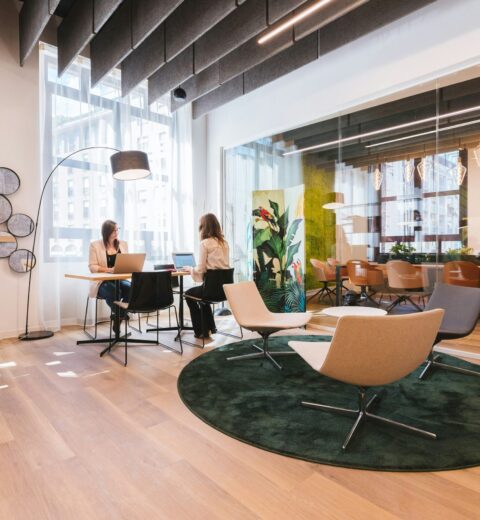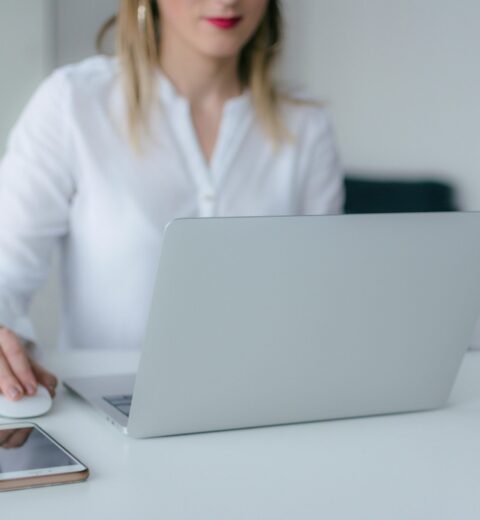6 Simple Ways To Optimise Your Office Space
A good mattress is always seen as a worthwhile investment, given the amount of time we spend in bed. Yet many of us spend an equal or greater amount of time in the office, doing something that – let’s be honest – we probably enjoy less than sleeping. It’s strange, then, that many office spaces are utilitarian at best, and make no attempt to refresh our minds and bodies in the same way. Many small businesses owners believe that their spaces are too small, or their objectives too opposed to the stereotype of the fun, tech startup style space. But your office doesn’t need to sport a ball pit and hammocks to be a more inviting and encouraging place to work. A series of simple changes can help to optimise your space, improving employee happiness and flexibility without compromising on performance.
Indoor plants
Plants can often be seen as obligatory desk fillers rather than serving any practical purpose, and are increasingly being excised from office spaces. Indeed, many plants found in offices are fakes, for decorative purposes only. Sometimes an office with inadequate natural light can’t host a plant, but for the most part, people simply underestimate the benefits of bringing nature indoors.
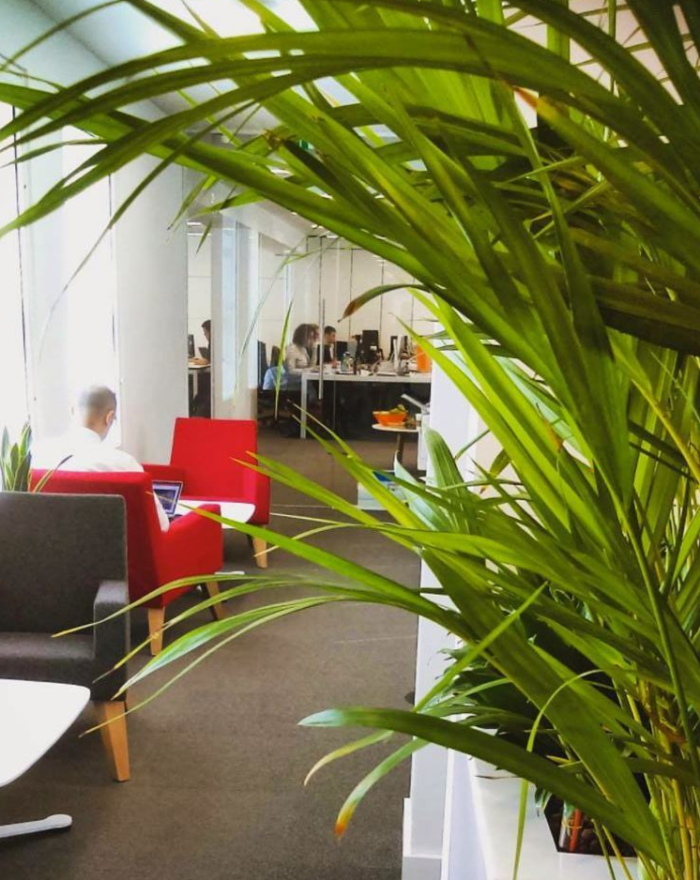
Plants boast a range of benefits for the physical health of employees. They do an effective job of recycling indoor air, absorbing volatile organic compounds (VOCs) released by man-made products, as well as natural pollutants like spores and bacteria. Plants also increase the humidity of a space and contribute oxygen, helping to reduce the symptoms of what’s known as Building Sickness Syndrome: fatigue, headaches, dry skin and breathing difficulties.
Bringing some greenery indoors also has a positive effect on people’s mental wellbeing. Ever since it was established that hospital patients with a view of trees recover faster, the role of plants in our wellbeing and recovery has been well regarded. Office plants and a view of outdoor spaces can reduce anxiety and produce a calming effect, reducing the risk of cardiovascular disease and improving concentration.
Adjustable Desks
Ergonomics are a massively underappreciated aspect of office design. With employees of all different heights, workstations are too often entirely static, with no ability to raise the height of the computer monitor. Even worse are the instances of employees bringing laptops to work, and ending up with their screens at chest height. Improper viewing angles affect numerous aspects of our physiology. Our posture can suffer as we slouch and contort to achieve the most comfortable viewing angle, while tilting our head forward creates undue pressure on our neck, causing neck ache and potentially even damaging the spine. These issues will inevitably affect people’s performance as they deal with pain and discomfort, and may ultimately result in people taking time off work, impacting productivity.
Adjustable desks eliminate these issues, allowing each employee to position their workstation at a height that suits them. Desks can be acquired with mechanisms that allow for a wide range of movement, and even transform into standing desks. Numerous benefits have been cited for standing desks, including improved blood flow, reduced fatigue and a decreased risk of heart disease. The flexibility will also be appreciated by employees, with the gesture itself having a positive effect on morale.
Calming colours
Few people would dispute that a grey office is an uninspiring one and that this may have a knock-on effect on productivity. But as more research is undertaken into the psychology of colour, it’s becoming better known that colour schemes can affect the way we work. Recent studies suggest what marketers claim to have known all along: that certain colours have a tangible impact on our creativity, productivity and general mood.
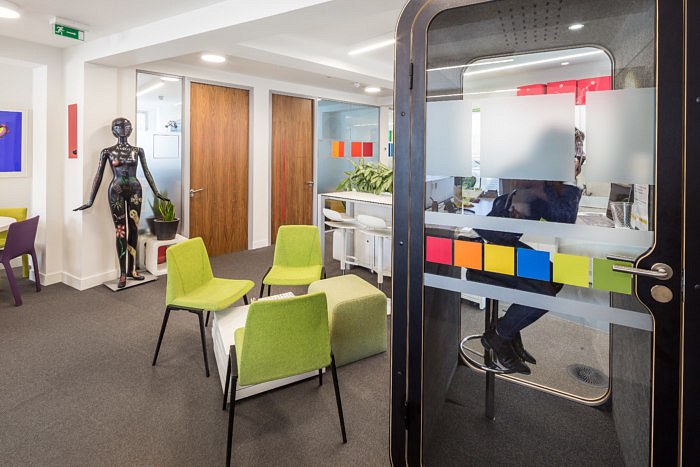
It’s unclear whether we have deep attachments to colours, or whether we simply associate them with places and things we find pleasant or unpleasant. White, for example, is said to be a bad colour choice, as we associate it with sterile environments like hospitals. Green meanwhile is believed to reduce anxiety, as it reminds us of nature, and yellow is said to be invigorating and stimulating to creativity. Apart from anything else, a splash of colour will reflect a fun and energetic ethos that can drive your business forward.
Go Paperless
Where stacks of paper and filing cabinets once monopolised the edges of offices, it’s now entirely possible for many businesses to go paper free. By using services such as Dropbox, Google Drive, and Microsoft OneDrive, all of your files can be stored in the cloud, meaning you won’t be tied to a single workstation. This also means that all of your files are backed up and can be accessed anywhere in your computer breaks, or you end up working remotely.
Printing and scanning can be done wirelessly, and even large files can be sent online through storage services or email. Even the signing of contracts and filling of forms can be replaced with tablet interfaces. You may want to hang onto a few pens, and many people still like the physical certainty that paper provides – but getting rid will do wonders to tidy your office space.
Mobile Shelving
Clutter is the bane of many an office, but the solutions to it can be less than elegant. Dull metal shelving, filing cabinets, and storage lockers don’t just look drab; they dominate rooms and use up valuable floor space that could be better served by additional desks or decor. For the many businesses who can’t afford to go completely paperless, traditional storage is impacting on the efficiency and optics of their office space.
One solution to this issue is a mobile shelving system. Instead of static units of shelving or rows of library-style shelves, mobile storage operates on wheels. This can take the form of shelving units which are locked together and roll apart for access or ‘slide-a-side’ shelving which sits two layers deep, with the first layer rolling out of the way. Replacing static shelves with these units can provide the same storage capacity in half the floor space, allowing you to expand and utilise your space for more productive purposes.
Hot desking
If you’ve heard of hot desking, it’s probably in the context of large businesses. Offices with dozens of workstations and a more transient workforce are an obvious choice for hot desks, where employees do not have their own customised workstation or opt to swap desks on occasion. But they can seem less relevant to your average office in a small or medium business. Even in a smaller space, a change of scenery can provide employees with a creative boost, and resolve any environmental complaints tied to one particular location.
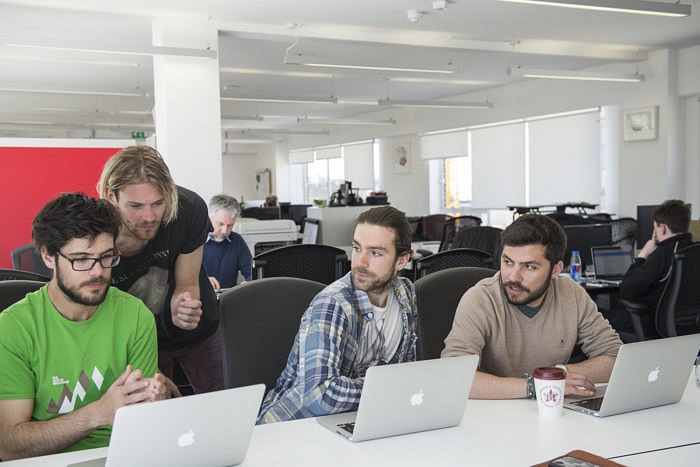
You also don’t need to lose any of the access or customisation of a traditional workstation, as cloud storage means that employees are not tied to one location. This, in turn, allows you to adjust hours and working schedules, bringing in temporary workers to cover employees on holiday or working from home. Personalisation is cited as a reason to avoid hot desks, but even this can be provided. Logging into a unified account system could show your personal desktop background on the hot desk PC, and log in to your Spotify account for your personal playlists. Digital picture frames can even be configured to show your choice of images when you log in.
Photo credits: eOffice
This post was written by Invicta Mobile Shelving – with more than 30 years of experience designing and installing mobile shelving and mobile storage systems, we’ve worked with the world’s most prestigious institutions, including The Bank of England, University of Oxford, Manchester Museum and the NHS.

